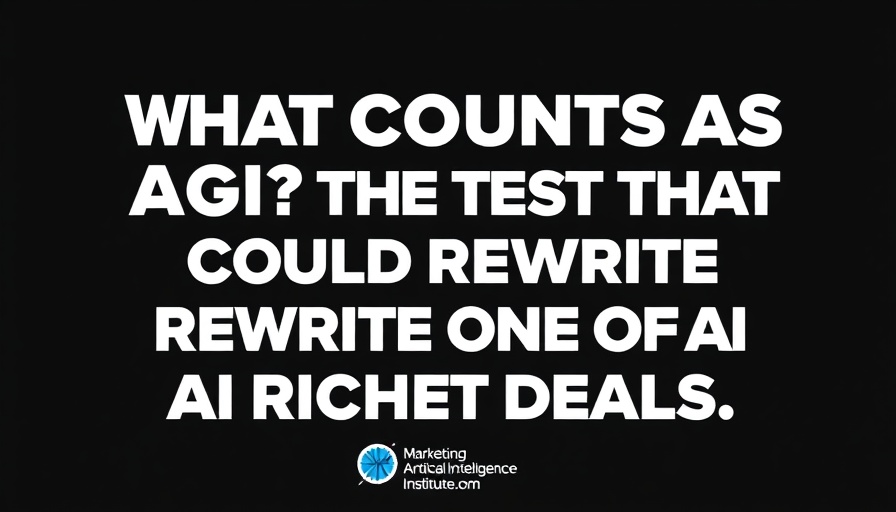
The High Stakes of AGI Negotiations
As Microsoft and OpenAI embark on redefining their multi-billion dollar partnership, the conversation around artificial general intelligence (AGI) takes center stage. This monumental negotiation is spurred by the need to clarify what AGI means in practical terms, as Microsoft's access to OpenAI’s cutting-edge models relies heavily on this definition.
Why the Definition of AGI Matters
The crux of the matter is that Microsoft currently retains rights to use OpenAI's technology until 2030—or until OpenAI determines it has achieved AGI. However, the stakes are rising as AGI is swiftly transitioning from being a theoretical concept into a concrete ambition. If OpenAI declares it has reached this milestone, the implications could drastically cut Microsoft off from accessing essential technology that fuels its core services, from Azure to Office 365.
Negotiation Variables: Exploring Each Side's Interests
Both companies face pressures that shape their negotiation. Microsoft aims to maintain its grip on OpenAI's offerings, possibly increasing its investment in the company as a hedge against potential competition. On the flip side, OpenAI seeks greater autonomy to market its models, even envisioning revenues that would support its transition from its current capped-profit structure to a more conventional commercial entity. Adjusting this balance is no easy feat, especially as the value of these negotiations intertwines with the very future of AI development.
Understanding AGI: Clarity Amid Ambiguity
What counts as AGI remains murky, with definitions varying even among industry experts. A prominent suggestion, the Economic Turing Test—coined by Ben Mann—posits that AGI would be defined as AI systems capable of outperforming humans in the majority of economically valuable tasks. The challenge, however, is not just in measuring these capabilities but in forming a consensus on the criteria. This defines what the future landscape of AI might look like and what frameworks will govern it.
The Future Landscape of AI: What's at Stake?
The outcome of these negotiations impacts not just Microsoft and OpenAI but the entire AI ecosystem. Microsoft’s cloud services, software development tools, and market strategies depend on AI innovation. Consequently, how it navigates this landscape could either bolster its competitive edge or lead to vulnerabilities if access to OpenAI is compromised. As they persist in discussions, the AI industry as a whole watches closely.
Closing Thoughts: Why This Matters Now
The consequences of misalignments in this negotiation could redefine how companies approach AI development and application in the future. Ensuring that both firms agree on what constitutes AGI is no small feat, but achieving clarity will be pivotal for sustaining innovation in AI. For anyone in the AI marketing strategy space, understanding how these developments unfold will be crucial in shaping future business growth and customer experiences.
 Add Row
Add Row  Add
Add 





Write A Comment